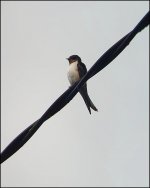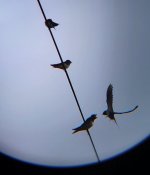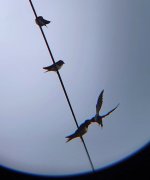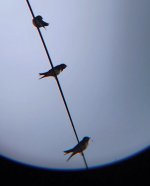nightly_moth
Member
The photograph is from yesterday, North West England. Three of them on this overhead electrical wire, seemingly being fed by an adult. The bird would fly towards them, and all three would simultaneously flap their wings quickly as the bird approached. I read Alpine Swifts are vagrents to Britain. It looks like they are breeding here. Is that quite rare? (If this is an Alpine Swift).











